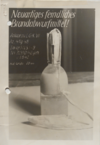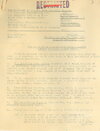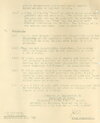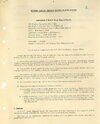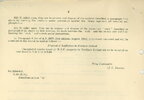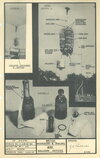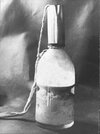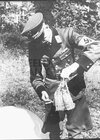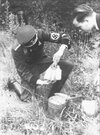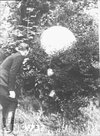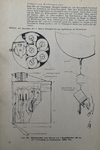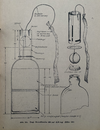When you enlarge the pic, it appears that it is in fact a so called "Molotov Cocktail" though similar improvised devices were already in use in ww1. While some were used episodically dropped by airplanes, it was not a regular type of ordnance. So the "Brandabwurff" (incendiary air dropped) is not to be taken as a general denomination but a as a desciption of this object. The presence of a small stabilizing parachute indeed points as it possible use as air dropped adaptation of this device.
The image text does not contain description or instructions of use except a mensuration (18cm) which is not clear : diameter? overall height? diameter of stabilizing parachute?
The text on page 369 gives more details:
Discovery of previously unknown enemy ordnance.
Appendix 1 -
1.) According to reports from the responsible district offices [Munich area], a previously unknown bottle-shaped enemy ordnance was discovered at three locations in the Lower Bavaria district. A picture is attached.
2.) Description:
a) Outer body:
White glass bottle (approx. 5 mm wall thickness),
15 cm high - 62 cm diameter, similar to a medicine bottle. Sealed by a red-painted metal cap.
A tinplate tube, 7 cm long and 2 cm in diameter, is placed over the bottle neck.
Inside the tube is an iron ball attached to a cord. At the end of the approximately 20 cm long cord is a strip of canvas approximately 30 cm long and 4-5 cm wide, apparently torn from a balloon.
b) Contents: From bottom to top:
6 cm yellow-green liquid
1 liter of colorless liquid (gasoline)
5 liter of gray-white liquid (phosphorus)
3.) Date found: July 30, 1942.
One bottle was hit by a farmer's vehicle, and a second bottle was accidentally smashed by a mower with a scythe.
When you are in a similar situation, with a text in a language you do not master, use the online image to text converter (
https://www.imagetotext.info/) then paste the result in the google tranlsator (here German to English). In 2025 language is ni longer a barreer.

